Since 2016, the UK has paid AirTanker £2 billion to provide 14 Voyager tanker/transport aircraft to the Royal Air Force.
The information came to light via a Parliamentary question.
Kevan Jones, Member of Parliament for North Durham Commons, asked via a Parliamentary written question:
“To ask the Secretary of State for Defence, how much the last five annual payments were to the AirTanker consortium to provide 14 A330 aircraft, broken down by year.”
Jeremy Quin, Minister of State for the Ministry of Defence, responded:
“The amounts paid annually to the Air Tanker consortium for the Voyager service over the past five financial years are set out below. Payments are made on a monthly basis.”
| Financial Year | 2016-17 | 2017-18 | 2018-19 | 2019-20 | 2020-21 |
| Amount (£million) | 361 | 384 | 388 | 403 | 408 |
In January 2004 the Ministry of Defence announced that a variant of the A330 MRTT had been selected to provide tanking service for the RAF for the next 30 years under the Future Strategic Tanker Aircraft (FSTA) programme, replacing the RAF’s existing L-1011 and VC10 tankers.
Under a March 2008 agreement, the AirTanker consortium was selected to provide 14 aircraft under a 27-year contract.
According to the Royal Air Force:
“This includes a so-called ‘Core Fleet’ of eight military serialled and one civilian-registered aircraft, supplemented by a ‘Surge Fleet’ of five civilian-registered aircraft that AirTanker uses commercially to generate additional revenue. The surge aircraft are demodified very close to A330-200 standard and can be recalled for military use if required. AirTanker owns, manages and maintains the aircraft and provides infrastructure, support, training facilities and some personnel, in particular Sponsored Reserve pilots and engineers.”
Named Voyager in service, the A330 MRTT began RAF operations with 10 Sqn on May 12th, 2012, flying an air transport sortie from its Brize Norton home base to RAF Akrotiri, Cyprus.


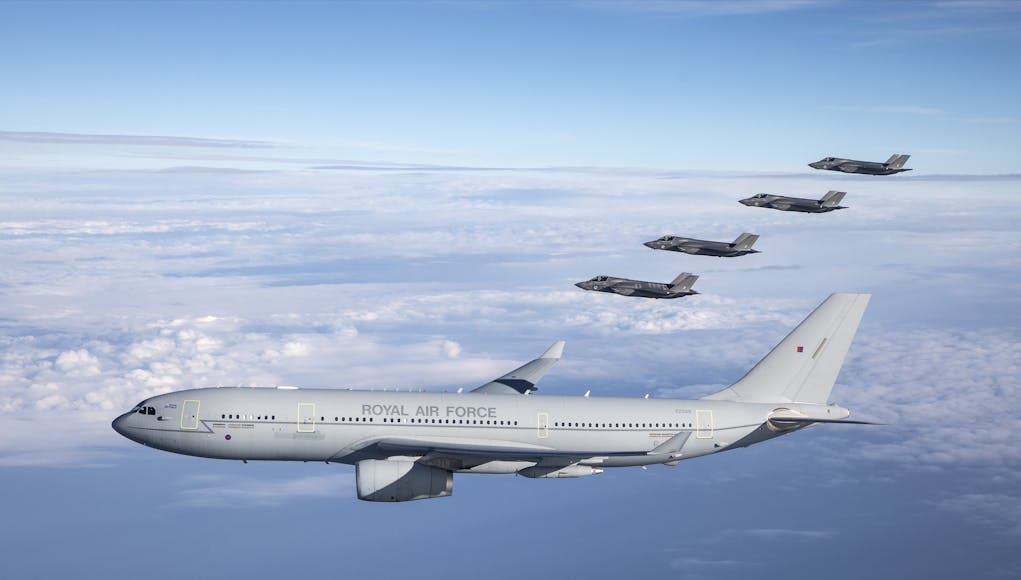
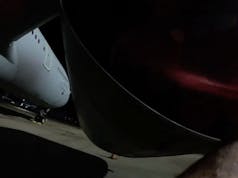

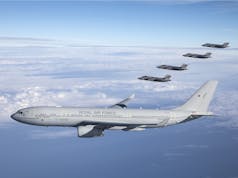

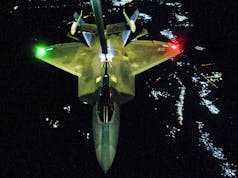

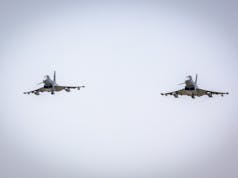


The labour government of Blair and then Brown really did like their PFI schemes.
I wonder what the costs would have been if uk gov had just bought the planes and then operated them in house over the same time scale?
Never mind the reported farce that the planes can’t be adapted for other methods of fueling / A400m can’t be adapted to allow it to act as a tanker unless there is payment of serious cash to the Tanker group.
Airbus list it as approximately $300 million per aircraft, before any other mod
in 2010 the Public Accounts Committee confirmed that rather than the 150m per plane, a buyer of 14 planes would normally pay £40m per airframe and estimated £10m for the conversion.
based on that you spent 1st 2 years of contract buying 14 planes, with no service or maintenance cost or training, storage cost, Fuel is set at £25000 ph,
The annual cost of the service, including military personnel costs, is around £450 million for the delivery of 18,000 flying hours.
and any Nato re-fueling is paid for by Nato @ cost
I believe that the purchase is separate
What use is there of using an A400M unless you don’t have a modern tanker fleet…
offers nothing
Can helicopters fuel from the voyager tankers? Is that a case for a400m kits? Can c17 fuel from the voyagers? If not then why can’t they be adapted
Mike what heli’s in RAF service today require A2A?
They can be adapted we have chosen not to due to cost and lack of the requirement regularly, admittedly it MIGHT be a requirement in the future with P8 and E7 coming online but that again isn’t the problem of the RAF, that is for a defence review to discover.
Both Chinook and Merlin can do air to air refuelled. The only aircraft we had that could do the job were Hercs. The A400M has now proved that it can be used to refuel helicopters in flight, as its stall speed is comparable to a Herc.
You will see Chinooks in particular being air to air refuelled in the near future by USAF Hercs, as this falls outside the Airtanker remit.
Hi Davey
Yes they can but that’s why I asked is it required? Hell of an outlay if we use it once every couple of years operationally
Also I thought we pulled the probes off our merlins and why we purchased the Long Range chinooks? Have a nice day
Edit for my crap spelling
A RAAF KC-30A (Voyager) flew 8 sorties refuelling 66 coalition aircraft during the Kabul airlift mission as the airport couldn’t refuel the aircraft, I think everyone here agrees the RAF need to have this capability.
We must get the BOOM fitted for these!!!!!
So not worth worrying about!
They serve a purpose and we should acquire more
Way too much money as usual. Whoever rented, leased or whatever them, the ‘contract’ should have been reviewed periodically. That is my issue here, why not look at whatever agreement there is??
Maybe certain people have shares in Airtanker Services Ltd?
Tri-Star-Vc-10s had an operating cost at the end of lives of over £1b for each airframe type. in crew/service/inspections/serviceability. TRI-STARS were run into the ground,
so more of a success story as delivered by businessmen and not bean counters
At the time of ordering In January 2004, What other Platform was available = NONE.
TRI-STARS and VC 10s were on their last legs after hard long years.
A A330 MRT has a unit cost of £500m each not forgetting its a 330/340 hi-bread so 14x£500m = £7b.
@ the Time RAF Tanker Fleet was costing the force more than £2b per year to run.
so paying ATC and there 27-year contract is a fixed worst-case scenario contract, with no Maintenance or service costs and 8 aircraft on call 24/7 Without fail.
so considering Warrior spunked more money and delivered nothing. Voyager was a success, maybe a boom now available would be welcome but why have a pilot fly a boom, when a pilot is already flying a plane. keep it simple
They are not 500m each, not even close. South Korea bought 4 with dual cobham 905’s and 805’s (better equipped than the RAF) for 1.3bn USD. That’s 940 million GBP or 235mln each fully equipped with additional support from airbus in a lower # lot buy.
It has to have a centerline FRU. Too many aircraft in the RAF and allied nations use boom/receptacle. Big aircraft take too long through the drogue system or cant use it at all, causing unnecessary time to be spent on station and further reducing the efficiency of the offload.
Your entire argument is flawed and frankly terrible. An Airtanker shareholder maybe.
That number is a bit off. Based on the historical exchange rates and the contract price Australia has for their order around the same time (1.2 billion Euro for 5 aircraft or 240 million euro per) with the GBP at the time buying 1.5 euro per a pound would have had the aircraft at 160 million pounds each. (On the other hand have seen sources from 2004 saying the contract was $1.4 billion AUD for the 5 making them cheaper again, But I was cautious and took the higher listed figure I found).
https://en.wikipedia.org/wiki/Future_Strategic_Tanker_Aircraft
I know wikipedia isn’t always the most reliable however under the contract for 10.5 billion pounds for the 27 years stated at 390m pounds paid annually (Im assuming this is based in dollar amounts for that year adjusted for inflation considering current ammounts are higher?)
In my current searching what I did stumble across and well worth a read is this
https://publications.parliament.uk/pa/cm201011/cmselect/cmpubacc/425/425.pdf
In it you will find some interesting figures such as the capital costs for 14 aircraft including infrastructure and training was just over 2.6 billion pounds, and the operating costs for 27 years for the fleet was 4.2 billion pounds. Do the math and 35% of what you are paying to AirTanker is wasted money.
In fact your 500 million pound figure per an aircraft is about right for the capital and life time costs of it.
The five surge aircraft are mad. Brown thought it a genius idea to lease them out to charter airlines, but they work on tight margins. They cannot burn fuel flying heavy military refuelling kit around. So UK taxpayers spent a fortune to modify these aircraft, only to spend another fortune taking that kit out. If we had a crisis, it would take months & cost another fortune to get them back into RAF service.
Perhaps it would be a better idea to bring in the 5 aircraft, fit them out and lease them for AAR to allies, the revenue used to offset the RAF cost.
Certainly better idea than current situation. I understand ther are now 10 aircraft in regular service as opposed to 8?
Both Thomas Cook and Jet2 were leasing them.
By my rough estimate that would put the end of the contract at 2035.
That isn’t all that far away so do we expect the RAF to extend the contract with the current fleet or buy new aircraft?
I believe its a sale and lease back, in 2034 the planes are then repaid and owned by the RAF.
Thanks.
Are the airframes expected to still be in usable condition by then or pretty much dead?
Probably at that point you would be at a refurbish/modernize or procure replacement stage and the aircraft would have enough condition left to last until either option was ready.
Its unlikely at that point they would continue to be commercially competitive as civil airliners due to advancing technology and so they could become solely military operated.
Yes, these aircraft fly far far fewer hours per year than a civilian A330. There should easily be 10 years life in them. As the 330 stayed in volume civil production until a couple of years ago there will be no support issues till at least 2050.
Regarding the exclusivity clause of the contract, do we pay AirTanker when using allied forces to refuel aircraft which *can’t* be refuelled by the Voyagers due to them not being fitted with a boom (e.g. C-17)?
That has been made clear in previous PQ’s. No we don’t pay if the type is not certified for refuelling or it is incompatible with the systems AT offer.
As SB said No we don’t pay a penalty if an aircraft refuels from another tanker because we can’t through physical limitations. It’s also worth noting that as of mid last year (last FOI available) HMG/RAF are yet to receive a penalty under the exclusivity clause, only penalties are claimed under the damages clauses even then only £1-2M.
I’ve post this before last time we spoke about AT on here but the contract seems very vague when it comes to exclusivity, interoperability training, operational restraints and a few more are all exemptions. so for example if you had a Voyager and KC135 looping together and a mixed fleet arrived say 2xtyphoons, 1xA400M, 1xC17 all RAF and 2xUSN F/A-18
It would be acceptable for the c-17 to go to the KC135 because of a operational restraint but not the A400M as that can link up with voyager BUT if the 2 F/A-18s refuelled from voyager and the Typhoons went over to the KC135 again fine because of interoperability training. If everyone filled up off the KC135 we would then be penalised as we are not using AirTanker.
It comes down to fair use, as long as AirTanker aren’t being obviously avoided then there’s no reason to chase clauses
This is unnessecary complexity and shouldn’t even cross the minds of the RAF/RN.
They should be able to say “This is the optimal solution for this task, do it” Not “What does our contract with AT say about that?”
Are there any actual M.O.D bean counters in the comments section? If not, why are you all acting like you are?
Using this system obviously works better for the R.A.F and NATO so unless you’re personally paying the bill or have a better idea…….. stop moaning. Using a sub contractor is more convenient as they obviously have aircraft dotted around the World so it makes sense in my opinion.
No offence Stephen but you don’t need to be an MOD bean counter to be hacked off with a government military contract. I want our tax money to be spent efficiently in whatever manner. No harm in questioning if this happens or if we’re overpaying for a capability. As for it “obviously” working, its not like the RAF have a choice, this set up was foisted upon them, if it works well should we follow it up with another contract for air defence too ???
With the RAF now operating RC-135, C-17, P8 and E-7 (future) must be an arguement to have boom and receptacle fitted would allow RAF to actually be able to AAR it’s own large A/C, would like to see K3’s fitted with Boom & receptacle so they can also refuel everything and K2’s with receptacle’s so they can be refuled by the K3’s when doing fighter trail or CAP.
I’m not going to pretend to have all the numbers, but £2B sounds like pretty good value to me. I’m not aware of any comments from the RAF that they haven’t received the service they required, either.
I just can’t see a military operation of 9 aircraft (with other 5 administered in reserve but flying commercially), with everything that goes into that, for 5 years, coming in at less than £2B. Especially if that includes the fuel that they’re providing, which I presume it does.
Sure, I can see the problem of a lack of boom, but my understanding was that the reason was HM Government not wanting to pay for the upgrade, rather than AirTanker refusing to do it.
Again, with the whole A400M refueling option, I thought this was a government/MOD lack of interest in the capability rather than a contractual headache with AirTanker. Particularly for rotorcraft, which I believe would be the primary recipients of fuel from a low and slow A400M, they can’t take fuel from an MRTT anyway so wouldn’t be covered by the contract exclusions. It’s just HMG hiding behind rules and regulations in the same way they did about not building RFA ships in the UK because of the EU’s (actually non-existent) “warship construction rules”.
If the Lockheed L-1011-500 Tristar and Vickers VC-10 and Vickers Super VC-10s were on their last legs in 2004
Frankly the VC-10s lasting another 9 years and the L-1011 Tristar lasting another 10 years should be a testament to how well engineered they were and how good the Royal Air Force was at maintaining them for that long
Interesting thread albeit any discussion of cost need to be considered alongside the fleet’s relatively outstanding reliability compared to other platforms mentioned. 7 months on, the surge capacity concept now appears to be a rare example of brilliant foresight in the early 2000s when this procurement was developed.